In Praise or Fast Food IELTS Reading Answer
11 min read
Updated On
-
Copy link
Table of Contents

Limited-Time Offer : Access a FREE 10-Day IELTS Study Plan!
In Praise or Fast Food Reading Answers, is a IELTS Academic Reading passage that consists of 14 questions.
With diligent practice, the Reading Module can be the top-scoring category for IELTS aspirants. To score well, you must understand how to approach and answer the different question types in the Reading Module.
By solving and reviewing Sample Reading questions from past IELTS papers, you can ensure that your Reading skills are up to the mark. The question types found in this IELTS Reading passage are:
The question types found in this passage are:
- Reading Diagram Completion (Q.27 – 29)
- Reading Sentence Completion (Q.30 – 34)
- Reading Multiple Choice Questions (Q.35 – 40)
If your target is a band score of 9 in IELTS Reading, check out the video below for some exclusive tips!
Reading Passage
In Praise or Fast Food
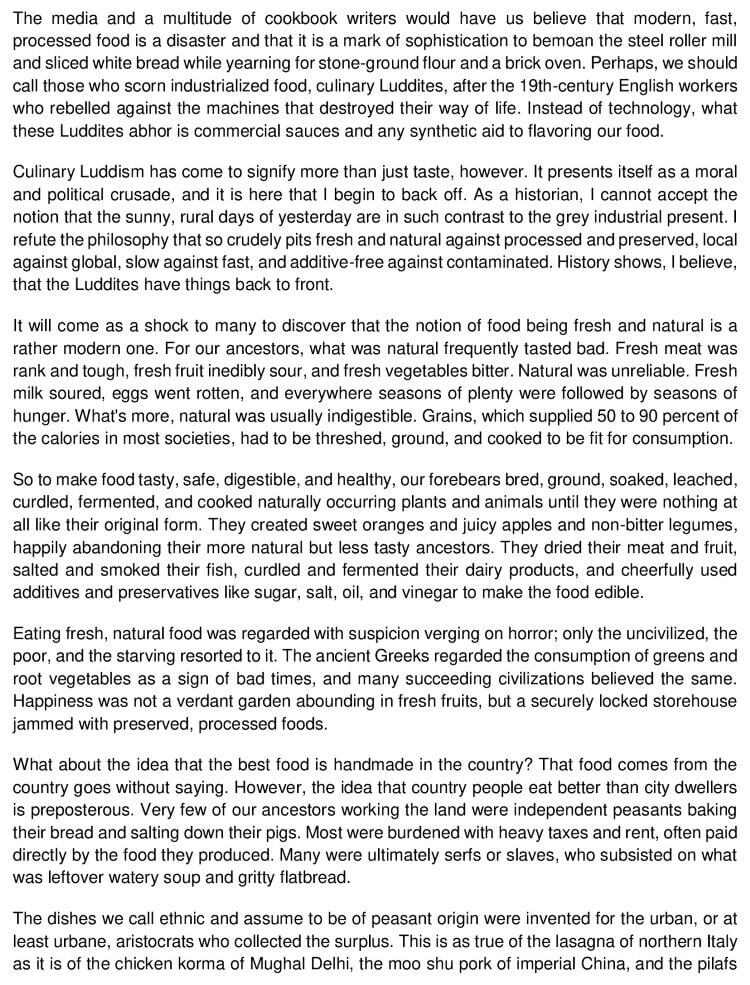
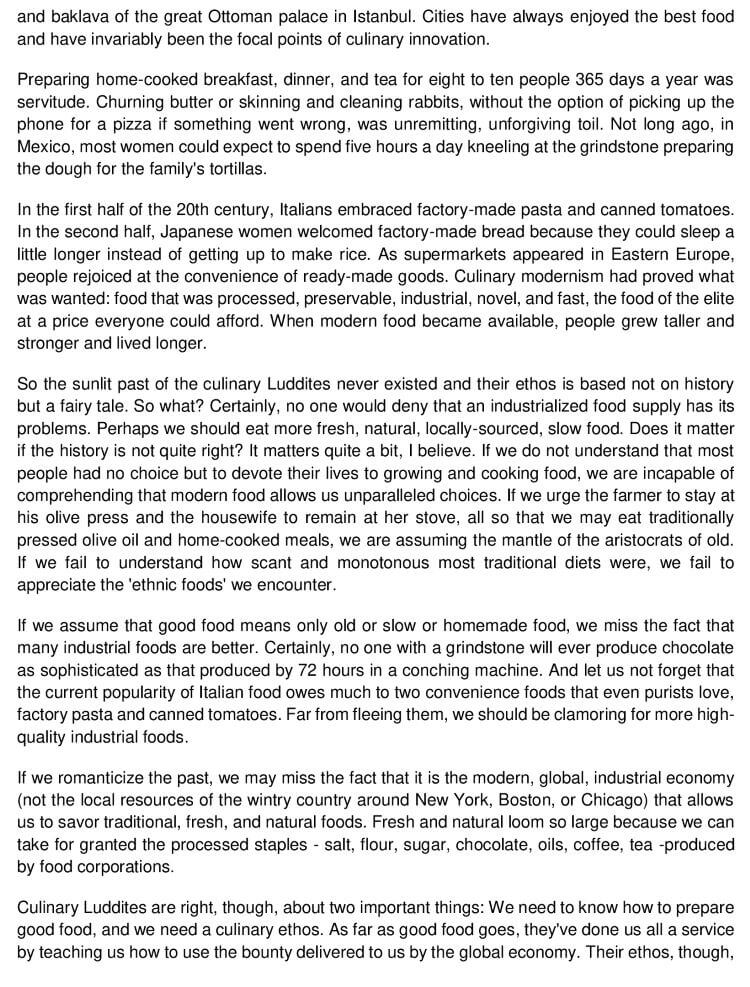

Questions 27-29
Label the diagrams below.
Choose NO MORE THAN THREE WORDS from Reading Passage 3 for each answer.
Write your answers in boxes 27-29 on your answer sheet.
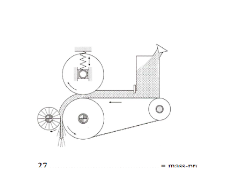
27 ………………………………….. = mass, produced bread.
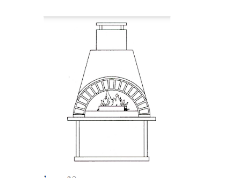
28 ………………………………….. = traditionally produced bread
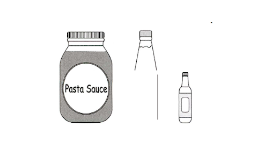
29 ………………………………….. enhanced by synthetic products
Questions 30-34
Complete the sentences.
Write NO MORE THAN TWO WORDS from the passage for each answer.
Write your answers in boxes 30-34 on your answer sheet.
30 The writer does not believe that a ……………………. philosophy of food production is superior to an industrialized philosophy of food production.
31 In the past, the majority of fresh, natural food ……………………. and could not be relied on.
32 Most people’s intake consisted largely of.. ………………….., which required a great deal of preparation.
33 The ……………………. of food was unrecognizable once it had gone through the various processes of making it edible.
34 For the ancient Greeks, a ……………………. full of food was preferable to a garden full of fruit.
Questions 35-40
Choose the correct letter A, B, C, or D.
Write your answers in boxes 35-40 on your answer sheet.
35 What does the writer say about peasants?
- They had a better diet than most people living in cities.
- They were largely self-sufficient.
- Much of what they produced went to a landowner.
- They created imaginative soup and flatbread dishes.
36 Lasagna is an example of a dish
- Invented by peasants.
- Created for wealthy city-dwellers.
- That was only truly popular in northern Italy.
- That tastes like dishes from several other countries.
37 Which of the following is NOT an important factor mentioned in the eighth and ninth paragraphs?
- The development of take-away food as an option
- The arduous nature of food preparation before mass-production
- The global benefits of industrialized food production
- The range of advantages that industrialized food production had
38 What is the important point the writer wishes to make in the tenth paragraph?
- There are disadvantages to modem food production as well as advantages.
- People need to have a balanced diet.
- People everywhere now have a huge range of food to choose from.
- Demand for food that is traditionally produced exploits the people that produce it.
39 The writer mentions chocolate, pasta, and canned tomatoes in the same paragraph because
- The industrialized version has advantages over the natural version.
- They are all products associated with a sophisticated lifestyle.
- They are all products that have suffered from over-commercialization.
- They are the most popular examples of industrial foods.
40 What is the overall point that the writer makes in the reading passage?
- People should learn the history of the food they consume.
- Modem industrial food is generally superior to raw and natural food.
- Criticism of industrial food production is largely misplaced.
- People should be more grateful for the range of foods they can now choose from.
In Praise or Fast Food IELTS Reading Answers with Explantion
27 Answer: steel roller mill
Question type: Diagram Completion
Answer location: Paragraph 1
Answer explanation: The first paragraph illustrates that the media and a multitude of cookbook writers would have us believe that modern, fast, processed food is a disaster and that it is a mark of sophistication to bemoan the steel roller mill and sliced white bread while yearning for stone-ground flour and a brick oven. These lines indicate that the media writers would have made the public believe that food is a disaster and are marks of sophistication to express discontent (bemoan) the steel roller mill that produced mass bread. Hence, the answer is a steel roller mill.
28 Answer: brick oven
Question type: Diagram Completion
Answer location: Paragraph 1
Answer explanation: In paragraph 1, it is stated that the media and a multitude of cookbook writers would have us believe that modern, fast, processed food is a disaster and that it is a mark of sophistication to bemoan the steel roller mill and sliced white bread while yearning for stone-ground flour and a brick oven. According to the diagram, it is a brick oven that traditionally produced bread. Hence, the answer is the brick oven.
29 Answer: flavoring
Question type: Diagram Completion
Answer location: Paragraph 1, last line
Answer explanation: The last line of paragraph 1 states that instead of technology, what these Luddites abhor is commercial sauces and any synthetic aid to flavoring our food. These lines indicate that other than using technology, these Luddites hate commercial sauces and other synthetic aid for flavoring food. So, the picture here is flavoring, which is enhanced by synthetic products. Thus, the answer is flavoring.
Unlock Explanations
If you want to have a look at the remaining explanations, sign up!
30 Answer: rural
Question type: Sentence Completion
Answer location: Paragraph 2,line 2
Answer explanation: In the 2nd line of paragraph 2, the writer states that as a historian, he cannot accept the notion that the sunny, rural days of yesterday are in such contrast to the grey industrial present. These lines indicate that the writer does not believe that the sunny, rural days of the past are in such contrast to the grey industrial present, that is the rural philosophy of food production is superior to an industrialized philosophy of food production. Hence, the answer is rural.
31 Answer: tasted bad
Question type: Sentence Completion
Answer location: Paragraph 3, line 2
Answer explanation: The writer mentions in the 2nd line of the 3rd paragraph that for the ancestors, what was natural frequently tasted bad, that is the majority of fresh, natural food tasted bad and couldn’t be relied on in the past. Hence, the answer is tasted bad.
32 Answer: grains
Question type: Sentence Completion
Answer location: Paragraph 3,line 5
Answer explanation: The 5th line of the 3rd paragraph state that Grains, which supplied 50 to 90 percent of the calories in most societies, had to be threshed, ground, and cooked to be fit for consumption. These lines suggest that most people’s intake consisted largely of grains, which had to be threshed, grounded, and cooked to perfection for consumption. Thus, the answer is Grains.
33 Answer: original form
Question type: Sentence Completion
Answer location: Paragraph 4,
Answer explanation: Paragraph 4 states that so to make food tasty, safe, digestible, and healthy, our forebears bred, ground, soaked, leached, curdled, fermented, and cooked naturally occurring plants and animals until they were nothing at all like their original form. We can understand from these lines that the original form of food is unrecognizable once it goes through the various stages of making that specific food edible. Thus, the answer is the original form.
34 Answer: storehouse
Question type: Sentence Completion
Answer location: Paragraph 5, last line
Answer explanation: The last line of the 5th paragraph states that Happiness was not a verdant garden abounding in fresh fruits, but a securely locked storehouse jammed with preserved, processed foods. These lines indicate that for the ancient Greeks, a storehouse full of food was more preferable and precious than a garden full of fruit. Thus, the answer is storehouse.
35 Answer: C
Question type: Multiple Choice Question
Answer location: Paragraph 6
Answer explanation: In paragraph 6, the writer has mentioned that Very few of our ancestors working the land were independent peasants baking their bread and salting down their pigs. Most were burdened with heavy taxes and rent, often paid directly by the food they produced. We can deduce from these lines that although the peasants baked their bread, they had to pay it to the landowners as they were burdened with heavy taxes and rent. Thus, the answer is C.
36 Answer: B
Question type: Multiple Choice Question
Answer location: Paragraph 7
Answer explanation: We find a reference for lasagna in paragraph 7, which states that the dishes we call ethnic and assume to be of peasant origin were invented for the urban, or at least urbane, aristocrats who collected the surplus. This is as true of the lasagna of northern Italy. These lines indicate that lasagna is an example of a dish that was created for wealthy city dwellers. Hence, the answer is B.
37 Answer: A
Question type: Multiple Choice Question
Answer location: Paragraph 8 & 9
Answer explanation: In paragraphs 8 and 9, the writer has mentioned the struggles of people preparing home-cooked meals with much difficulty. In Mexico, most women had to kneel for 5 hours at the grindstone to prepare the dough. However, in the 9th paragraph, it is revealed that Italians embraced the factory-made pasta, followed by the Japanese adopting the factory-made bread. As supermarkets appeared in Eastern Europe, people rejoiced at the convenience of ready-made goods. Culinary modernism had proved what was wanted: food that was processed, preservable, industrial, novel, and fast, the food of the elite at a price everyone could afford. As a result, the development of take-away food as an option was not an important factor mentioned in these paragraphs. Thus, the answer is A.
38 Answer: D
Question type: Multiple Choice Question
Answer location: Paragraph 10, line 4
Answer explanation: The writer has mentioned in the 4th line of paragraph 10 that If we do not understand that most people had no choice but to devote their lives to growing and cooking food, we are incapable of comprehending that modern food allows us unparalleled choices. If we urge the farmer to stay at his olive press and the housewife to remain at her stove, all so that we may eat traditionally pressed olive oil and home-cooked meals, we are assuming the mantle of the aristocrats of old. These lines indicate that demand for food that is traditionally produced exploits the people who produce it. Thus, the answer is D.
39 Answer: A
Question type: Multiple Choice Question
Answer location: Paragraph 11, line 2
Answer explanation: We can find the reference for chocolate, pasta, and canned tomatoes in the 2nd line of the 11th paragraph, “Certainly no one with a grindstone will ever produce chocolate as sophisticated as that produced by 72 hours in a conching machine. And let us not forget that the current popularity of Italian food owes much to two convenience foods that even purists love, factory pasta and canned tomatoes. The writer has mentioned these products because there are disadvantages to modern production as well as advantages. Thus, the answer is W.
40 Answer: C
Question type: Multiple Choice Question
Answer location: Paragraph 1 – 13
Answer explanation: When we go through reading passage 3, we understand that the overall perspective of the writer is that criticism of Industrial food production is largely misplaced. Thus, the answer is C.
Book a FREE Online Webinar with Our IELTS Experts to Learn More Tips and Techniques for IELTS Reading!
Tips for Answering the Question Types in the In Praise or Fast Food Reading Passage
Let us check out some quick tips to answer the types of questions in the ‘In Praise or Fast Food’ Reading passage.
Diagram Completion
In Diagram Completion, you fill in gaps in a diagram based on information from the passage. Answers may be words or phrases directly from the text.
Tips for Diagram Completion:
- Read Instructions Carefully: Note word limits for each gap.
- Identify Keywords: Highlight important terms in the diagram and locate them in the passage.
- Skim and Scan: Skim the passage for overall ideas and scan for specific details related to the diagram.
- Use Context Clues: Read surrounding text for context to find the precise words or phrases needed.
- Check Grammar and Spelling: Ensure answers are grammatically correct and accurately spelled.
Sentence Completion:
Sentence Completion is a type of IELTS reading question that requires you to fill in a gap in a sentence with a word or phrase from the passage.
To answer these questions, you can use the following strategies:
- Read Instructions Carefully: Pay attention to the word limit for each answer.
- Identify Keywords: Highlight key terms in the sentences to find related information in the passage.
- Skim the Passage: Get an overview of the text to understand the main ideas and context.
- Look for Synonyms: Be prepared to find synonyms or paraphrases in the passage that fit the sentences.
- Check Your Answers: Ensure that your completed sentences make sense and fit grammatically.
Multiple Choice Questions:
You will be given a reading passage followed by several questions based on the information in the paragraph in multiple choice questions. Your task is to understand the question and compare it to the paragraph to select the best solution from the available possibilities.
- Before reading the passage, read the question and select the keywords. Check the keyword possibilities if the question statement is short on information.
- Then, using the keywords, read the passage to find the relevant information.
- To select the correct option, carefully read the relevant words and match them with each option.
- You will find several options with keywords that do not correspond to the information.
- Try opting for the elimination method mostly.
- Find the best option by matching the meaning rather than just the keywords.
Check More IELTS Reading Answers
Practice IELTS Reading based on question types

Start Preparing for IELTS: Get Your 10-Day Study Plan Today!
Recent Articles

Nehasri Ravishenbagam

Haniya Yashfeen

Haniya Yashfeen

Haniya Yashfeen




Post your Comments